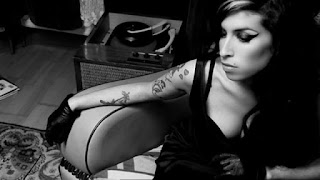Young woman in white go-go boots
and red hot pants: it's a good look
and red hot pants: it's a good look
I've been told - and I don't know if it stands up to serious etymological scrutiny - that the term go-go is not simply what linguists term a reduplication.
That it derives, rather, from the French expression à gogo (in joyful abundance); an expression which is in turn derived from the ancient French word for happiness, la gogue. This sounds plausible to me, and I love the idea that go-go boots are a form of footwear born of gaiety and plenitude; just as go-go dancers embody the Dionysian spirit of ecstasy and excess.
Introduced into the world of women's fashion in the mid-1960s, go-go boots as originally conceived by French designer André Courrèges, were mid-calf in length, low-heeled, and distinctively white in colour. Since then, the term has also come to include knee-high boots with block heels in a multitude of colours.
Purists might moan about this development, but, personally, I think it a good thing. Indeed, if I'm honest, I prefer the later designs that come higher up the leg and have chunkier heels. I also prefer the boots to be made of PVC, rather than leather, thus giving them a younger, poppier, more futuristic feel (as intended by Courrèges) than footwear made from more traditional materials.
Ultimately, despite Nancy Sinatra's insistence to the contrary, these boots are made for dancing and for space travel, not walking - and certainly not walking all over another person as if one were wearing a pair of black jackboots! Sinatra may have helped popularise the go-go boot, but in also establishing it as an aggressive symbol of empowerment, she robs it of its seductive appeal which is based on the subversion of phallocratic forms through playfulness (understanding seduction as a differential concept in the manner of Baudrillard, not as a sexual term).
Notes
To see an original boot design by Courrèges, click here.
The song, These Boots Are Made for Walkin' (1966), written by Lee Hazlewood, recorded and performed by Nancy Sinatra, can be found on YouTube by clicking here.










